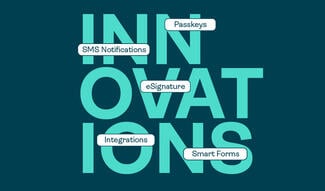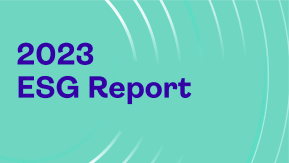OneSpan Sign Developer: Release 11.42 Overview – Part 2

OneSpan Sign version 11.42 was recently deployed to preview and sandbox environments, and the update includes new and exciting product capabilities. In the previous blog, we outlined some of the most notable updates in this release. Picking up where we left off, we will unveil more features in this blog and explain how these solutions could empower your use cases. Let’s get started!
New Callback Notification Event
As we covered in the previous blog, Release 11.42 revamped the document view event so that the document ID will also be included in the notification message, and the integration knows which exact document the signer is currently viewing. This comes in handy when you want to keep track of the signer’s browsing history and for better auditing purposes.
The same enhancement has also been introduced in remote signing scenarios along with the support of “Document Viewed” as a callback notification event! You can register the event via sender UI portal as shown below:

Once a signer or a reviewer navigates to a document, OneSpan Sign will send an HTTP POST to your registered listener endpoint with a payload similar to the JSON below:
{"@class":"com.silanis.esl.packages.event.ESLProcessEvent","name":"DOCUMENT_VIEWED","sessionUser":"2125b892-60e4-4ab0-9756-5e7348d790cc","packageId":"-0R2jWSX5cdqsBqEVHjvMsFr_Sw=","message":null,"documentId":"default-consent","createdDate":"2021-06-21T15:52:13.912Z"}
Note:
- “name”: Your callback listener will switch by the callback event name and look for the particular name “DOCUMENT_VIEWED”.
- “sessionUser”: The session user refer to the Signer’s signer ID. If you are not familiar between role ID and signer ID, check our previous blog “Role vs Signer - Part 1”.
- “createdDate”: No matter what time zone your transaction has specified, the timestamp used in callback payload is always in GMT time.
Branding Color for Optional Signatures
OneSpan Sign’s new signer experience features more powerful options to re-brand your signing ceremony compared including defining the color scheme in order to have a more consistent look and feel with your brand. As of release 11.42, admin users can now customize the background color for optional signatures and make it more visually distinguished from the required signatures. You will be able to find it via admin’s sender portal > Admin dropdown> Signing page > Colors section.

Optional Fields and Signatures Navigation
Another enhancement for optional signatures is for the navigator experience. Formerly, the Navigator iterated only through the required fields and signatures. This is no longer the case since 11.42 after a new package setting has been introduced:
“settings” > “ceremony” > “optionalNavigation” : true/false
Turning on this package level flag allows the New Signer Experience navigator to iterate through both the required and optional fields and signatures in a document. Knowing it’s a package setting, it’s also possible to specify the default value at the account level by contacting our Support Team.
Drop-down menu for transaction type
OneSpan Sign offers multiple signing modes and transaction types, for example remote signing, in-person signing, notarization signing, and now the Virtual Room signing. It can be overwhelming for ad-hoc users to select from several choices in the previous experience. Now these options have been unified and listed in a drop-down menu in the transaction or template creation page:

Hopefully this article has provided a helpful guide to new and updated features in the 11.42 release. If you have any questions regarding this blog or anything else concerning integrating OneSpan Sign into your application, visit the Developer Community Forums. Your feedback matters to us!









